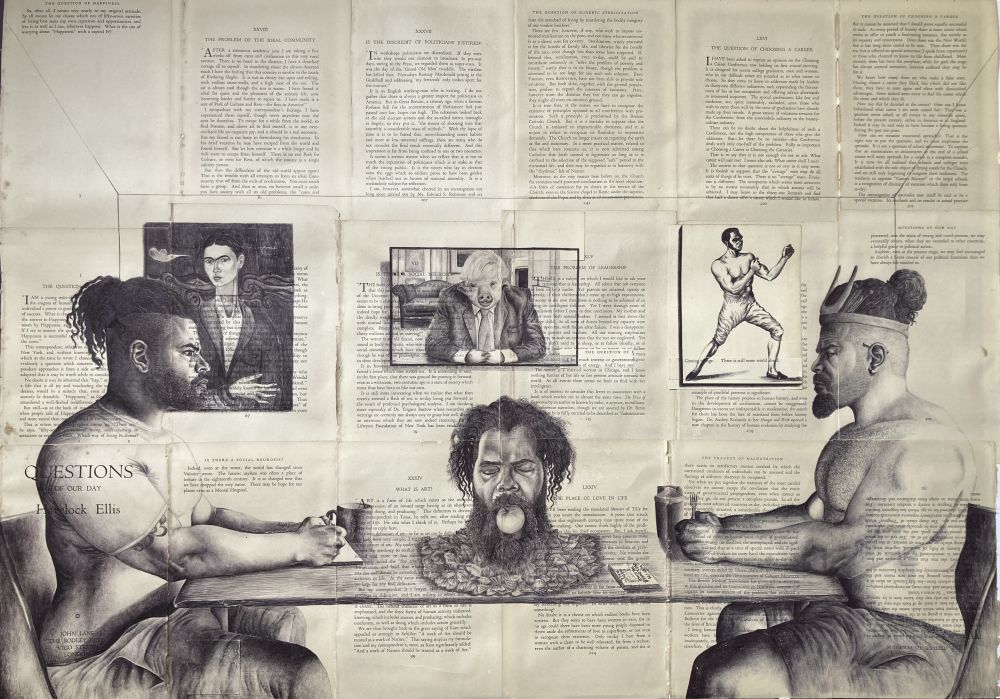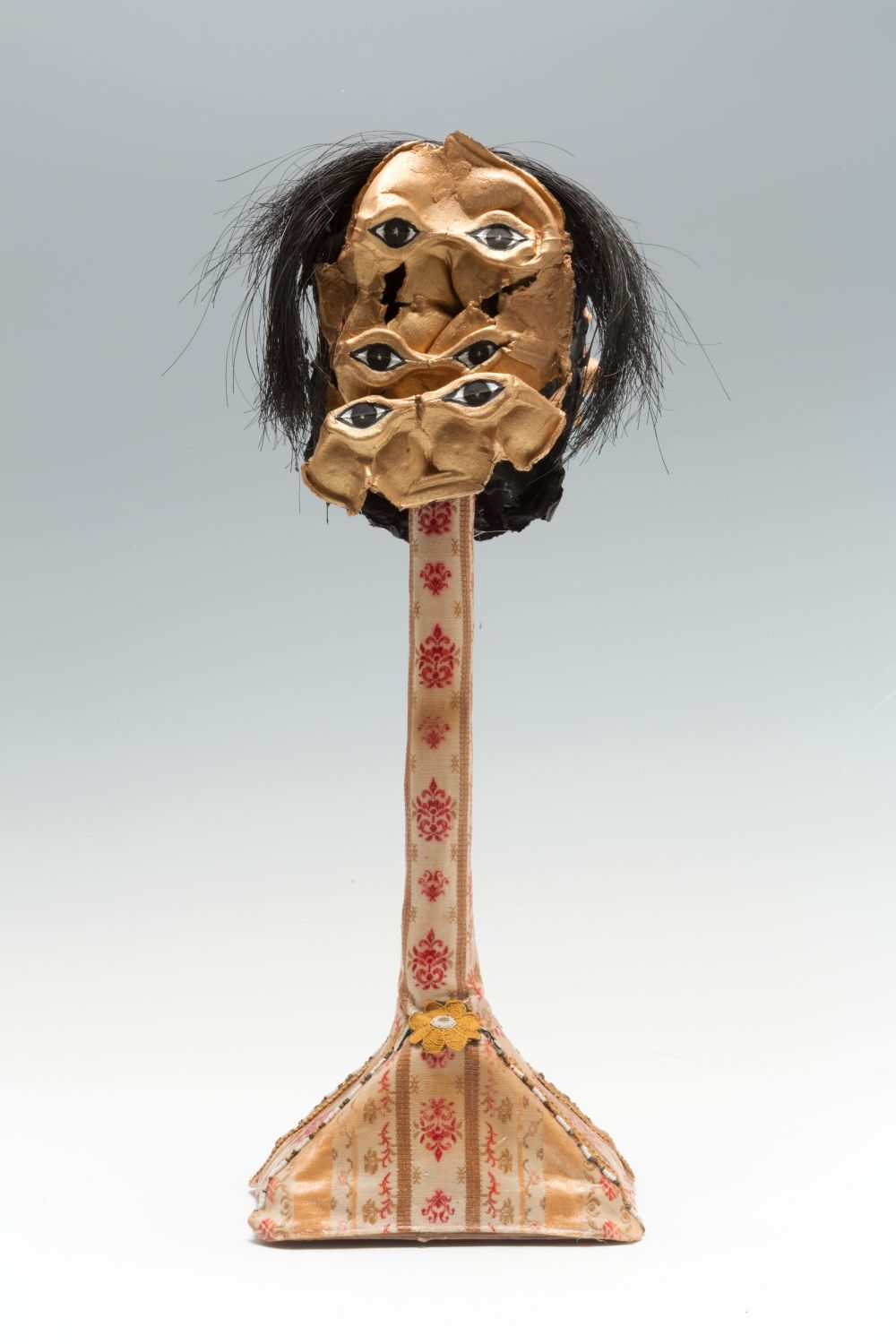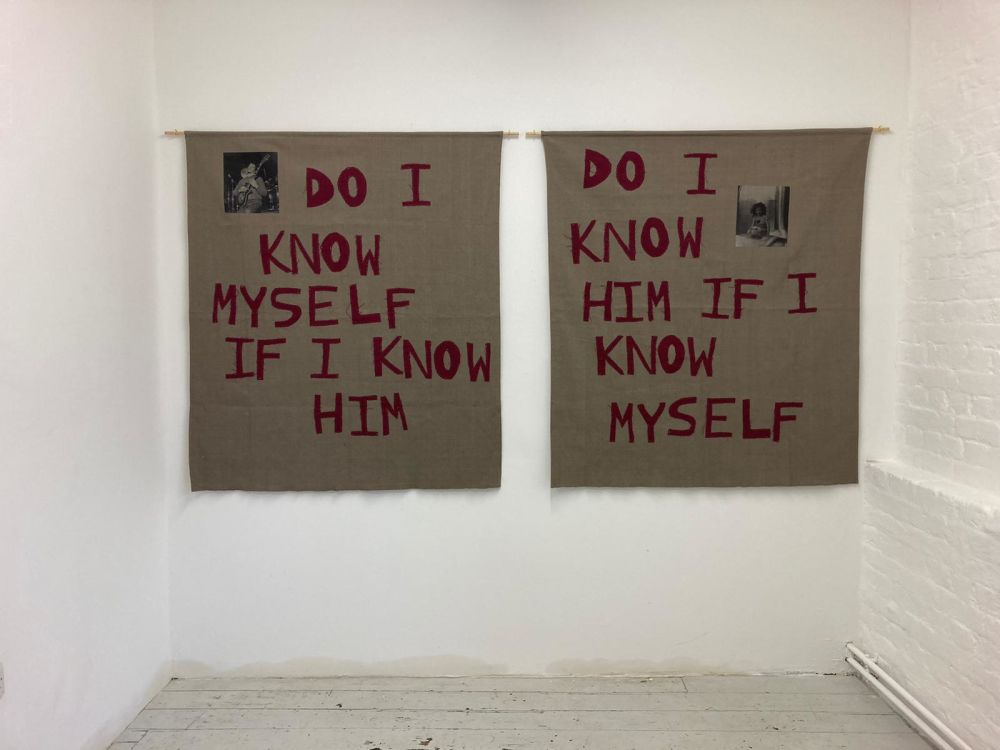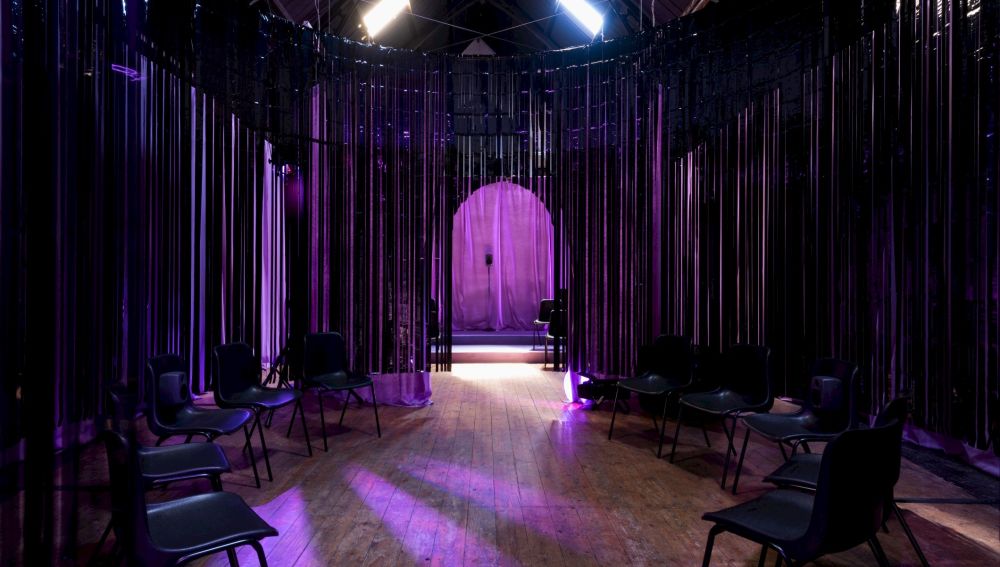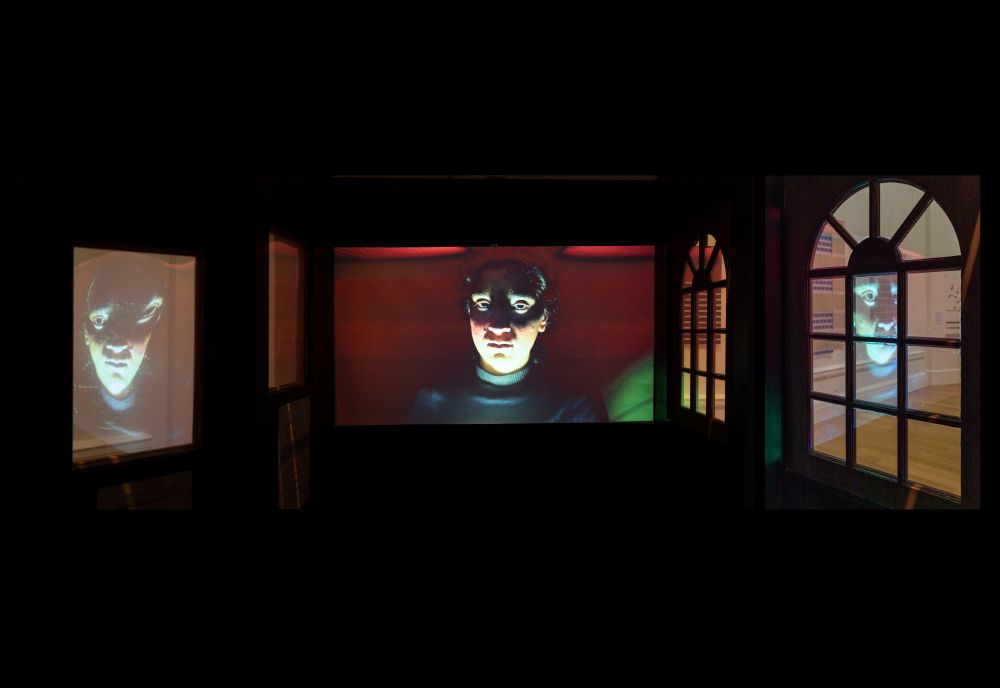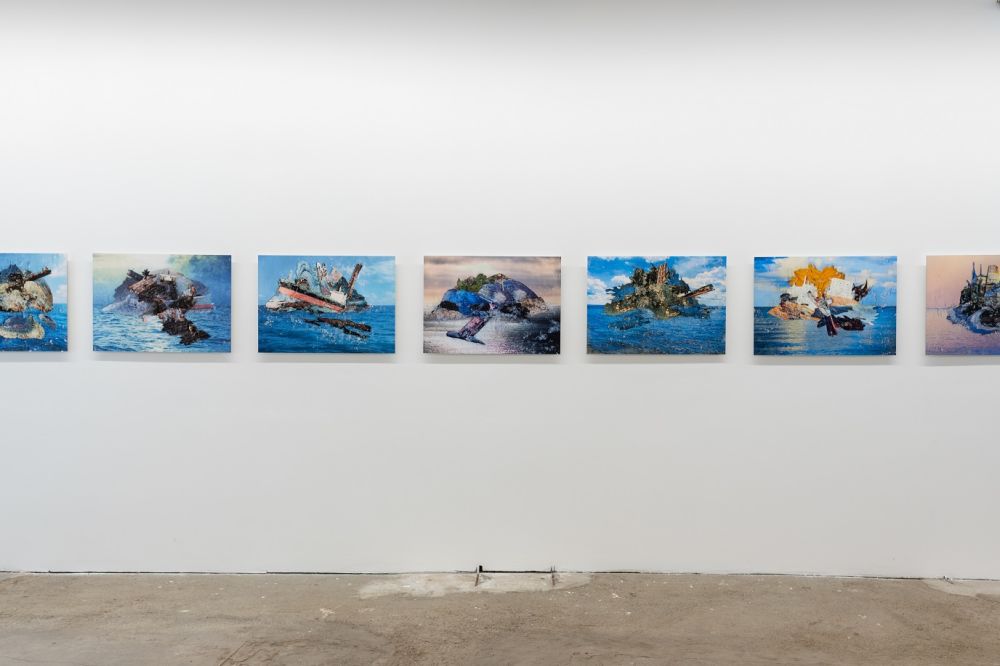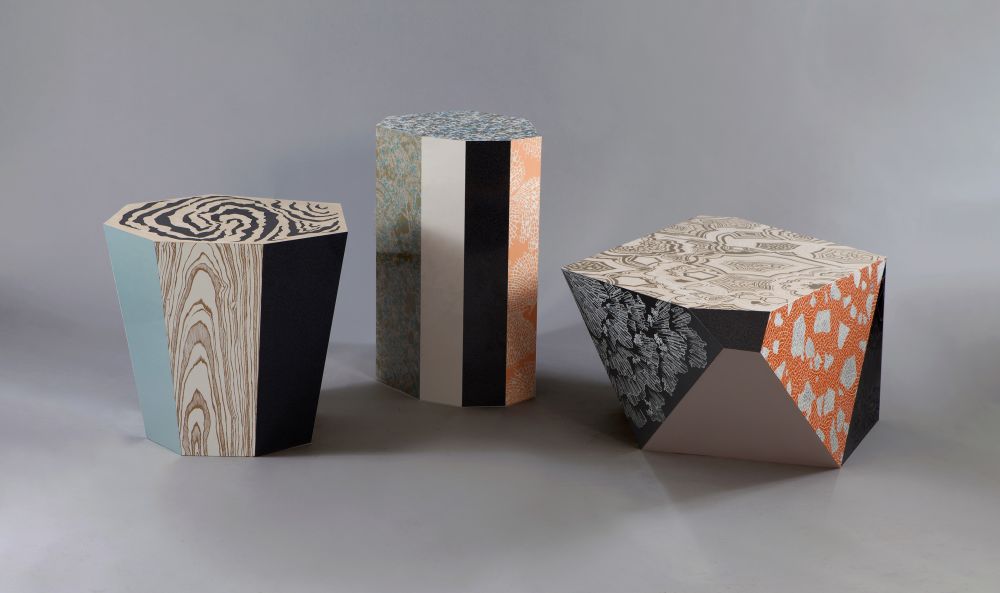Announcing the first cohort of artists to the 20/20 project
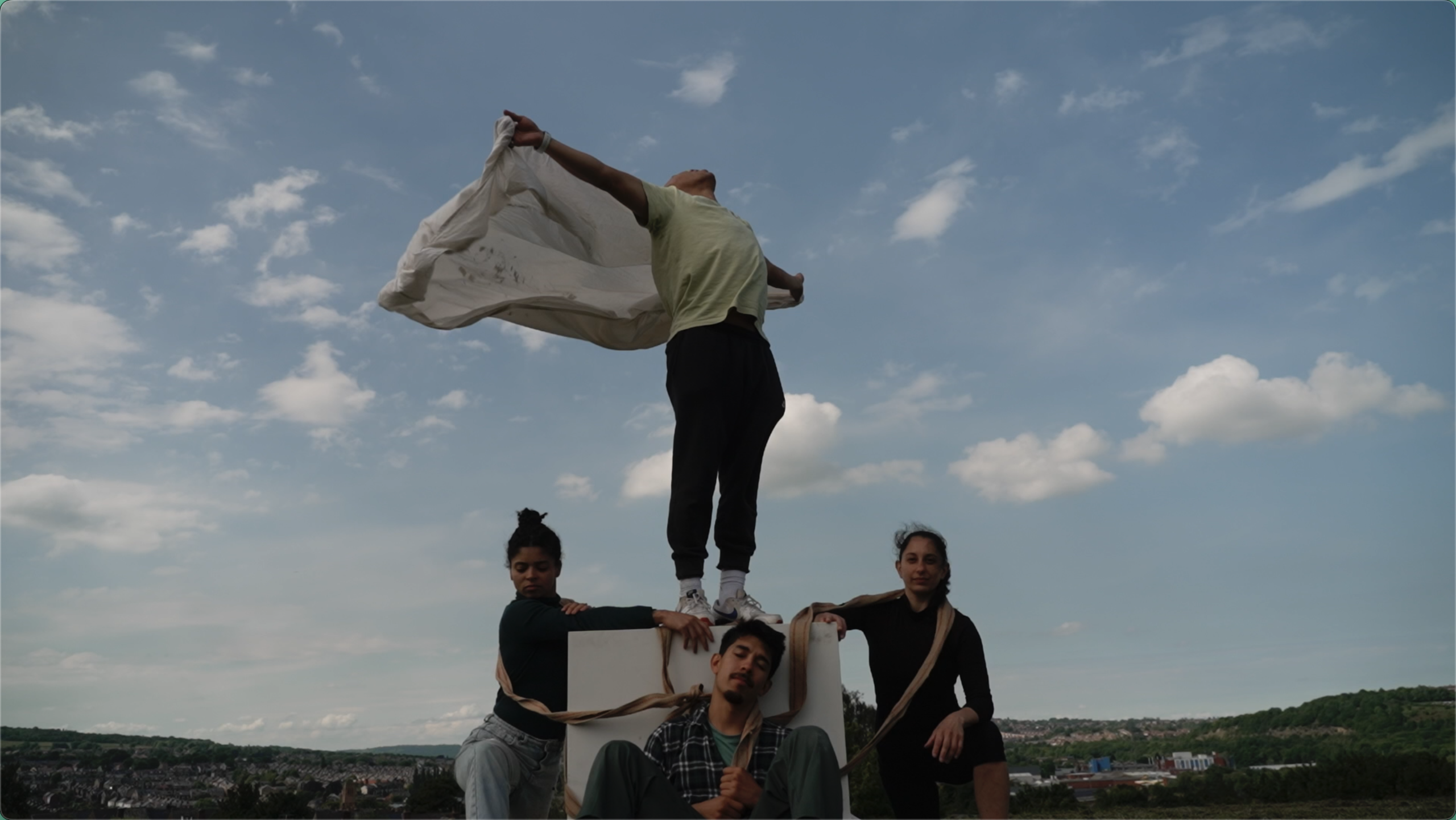
- Written byCat Cooper
- Published date 29 September 2022

Eight emerging and mid-career artists with an extensive range of practices are the first of 2 cohorts to join 20/20: a national commissioning and network project directly investing in the careers of a new generation of ethnically diverse artists.
20/20 was launched in November 2021 by UAL Decolonising Arts Institute, working with a network of 20 UK public collections, museum and gallery partners, and with funding from Freelands Foundation, Arts Council England’s National Lottery Project Grants Programme and UAL. The artists were selected following an open call in May-June this year.
Working across a range of media, forms and materials, the artists’ distinctive and interdisciplinary practices span ballpoint pen portraiture, drawing, printmaking, film and sound installations, sculpture using found elements, metal and vitreous enamels, performance, participatory workshops, poetry, photography, public realm projects, and intimate and large-scale sensory ritual events.
The artists explore themes around the construction and disruption of identity, self, and heritage, lived experiences of cultural and structural marginalisation, working class communities and environmental concerns. Common threads across their work relate to de/colonisation and colonial trauma, ideas of appropriation, ownership and hybridity and the representation of exile and migration in the UK.
The artists’ 15-month paid residencies at 8 UK partner museums, galleries and art collections are underway, where they will receive mentoring and support to develop their artistic practice. At the end of their residency, each artist will produce a commissioned artwork that will become a permanent piece in their residency partner’s collection.
The 20/20 project was conceived in response to urgent calls for action within arts and culture, to tackle social inequities and racial injustices amplified by the COVID-19 pandemic, and in the wake of Black Lives Matter. A further 12 artists will be brought on board in 2023, pairing a total of 20 artists with 20 UK collections and resulting in 20 new permanent acquisitions over the life of the project.
The artists and their residency partners
Madi Acharya-Baskerville and The Lightbox, Woking
Madi Acharya-Baskerville is an Asian born diaspora artist, living and working in the UK. The themes explored in her work range from environmental concerns, migration and exile and gender issues. What unities them is the found element, matter that already exists around us, an enduring reflection of the human condition.
Her practice involves the synthesis of unlikely elements which she sources from different locations, the coastline, woodlands and vintage markets. Using objects, textiles, song, conversation and magazine cuttings which resonate with her on some level, she creates works which move fluidly between different media. Some of the materials have had a past life such as wooden panels previously part of furniture or embroidered textiles which have seen better occasions. Through joyous transformative processes these objects and materials are reborn as part of something new.
@madiacharyabaskerville | www.madiacharya-baskerville.org
Aqsa Arif and Kelvingrove Museum & Art Gallery, Glasgow
Aqsa Arif uses the interdisciplinary mediums of poetry, photography, installation, printmaking and film to construct complex structures in which she explores the surreal nature of the human psyche. Her work draws from cinema as a medium, as she uses its architectural and spatial characteristics to represent states of mind which cannot be fully understood through rational study.
Graduating from Glasgow School of Art in 2019, she received a First-Class degree in Painting and Printmaking and now serves as founder and committee member of SaltSpace Co-operative and the Studio Manager for Alberta Whittle. Exhibitions include, that sinking feeling, Gallery of Modern Art, Glasgow (Sep 21 – Jan 22), Her Wild Reflections, Jupiter Artland (2021), RSA New Contemporaries 2020 and ‘Come Together’ at Tate Modern, London.
@aqsa.arif.art | www.aqsaarif.com
Habib Hajallie and Pallant House Gallery, Chichester
Ballpoint pen artist Habib Hajallie's practice looks to empower often marginalised minorities through the exploration of identity within portraiture. Confronting socio-political issues within his drawings can act as a catalyst for a discourse regarding the perception of various demographics as being of lesser humanistic value. Specifically, with the disenfranchised often being undermined by mainstream media; somewhat paradoxically reflecting an archaic hierarchy of status similar to colonial ideologies.
Using antique texts and maps as the canvases for his works enables Habib to pragmatically re-contextualise ephemera, creating a cohesion between the concepts informing the work and the aesthetic output. In March 2022 he was elected as a member of the Royal Society of British Artists.
@habib_hajallie | www.habibhajallie.com
Gayle Chong Kwan and Compton Verney, Warwickshire
Gayle Chong Kwan is a British artist of Scottish/Chinese-Mauritian heritage whose photographs, sculptures, installations, public realm projects, and intimate and large-scale sensory ritual events are exhibited nationally and internationally. At the core of her practice is an expanded and embodied notion of visuality through which she explores interiority and collective experiences, whereby objects, people, and activities have the potential to be encountered in different configurations. She explores the politics of travel, waste, the botanical, collecting and categorization strategies, islands, and decolonisation.
Her work is exhibited and published nationally and internationally, and is held in public and private collections. She is represented by Galerie Alberta Pane Paris and The Artists Agency UK.
@gaylechongkwan | www.gaylechongkwan.com
Yuen Fong Ling and Sheffield Museums Trust
Yuen Fong Ling is an artist, curator based at Bloc Studio Sheffield, and Senior Lecturer at Sheffield Hallam University, specialising in social art practice, post-colonial art and queer art theory, and founder member of The Human Memorial Research Collective. Ling has an MFA from Glasgow School of Art (2005-7), and Fine Art PhD by Practice from University of Lincoln entitled “A Body of Relations: Reconfiguring the Life Class” completed in 2016. Ling is part of Sheffield City Council’s heritage working group to decolonise street names, statues and monument in Sheffield city centre, and appointed commissioner for Sheffield’s Race Equality Commission 2020/21.
Working with people is at the heart of his practice. Ling uses socially engaged, performance and participatory-based strategies to make work that explores historical narratives and omissions, especially from LGBTQ+, working class communities, migrant experiences in the UK. The practice was politicised by questions of British-ness, challenging concepts of identity and representation, by exploring the critical framing of the ‘orientalised gaze’ and how the ‘exotic’, ‘other’ manifests in popular culture.
@yuenfongling | www.yuenfongling.com
Shenece Oretha and The Hepworth Wakefield
Shenece Oretha is a London based multidisciplinary artist sounding out the voice and sound’s mobilising potential. Through installation, performance, print, sculpture, sound, workshops and text she amplifies and celebrates listening and sound as an embodied and collective practice.
Her practice is invested in the mobilising potential of sound and listening in art. Through multi-vocal and multichannel installations, sculpture, print, workshops and text her work amplifies and celebrates listening and sound as an embodied and collective practice. Shenece's works are attentive to not just the music, but the musicality of Black art and life, oral and aural traditions, ceremonies and literature together with the emotional, physical and communal resonance they generate.
@oooretha | www.black-whole.info
Jamila Prowse and National Disability Arts Collection & Archive (NDACA)
Jamila Prowse is an artist, writer and researcher who works across moving image and textiles to consider methodologies for visualising mixed race identity and the lived experience of disability. She is drawn to stitch making and patchwork as a tactile form of processing complex family histories and mapping disability journeys, and moving image as a site of self-archiving and autoethnography.
Jamila is a member of the Brent Biennial Curatorial Committee 2021-2 and an Associate Lecturer in photography and moving image at London College of Communication, UAL. Previous exhibitions and screenings include Hordaland Kunstsenter (Bergen, Norway), Obsidian Coast (Bradford, UK) and South London Gallery (London, UK). Her reviews and essays have appeared in Frieze, Elephant, Dazed, GRAIN, Art Work Magazine and Photoworks.
@jamilaprowse | jamilaprowse.com
Hannah Sabapathy and The Harris Museum, Art Gallery & Library, Preston
Hannah is an artist whose practice focuses on pattern and colour, born and raised in Birmingham and now based in Dundee. Hannah originally trained as a printed textile designer and worked for several years in the textile industry.
After studying at the RCA, her practice shifted to exploring different materials to create a series of sculptural furniture pieces. These were made using a range of techniques including screen printing, lacquering and laser etching. Her work combines drawing, screen printing and rudimentary printing techniques to create unexpected collages of pattern. More recently Hannah has begun to work with metal and vitreous enamels. She often look at historic patterns and techniques. Her practice bridges the world of craft, design and art and her more commercial work exists under the name Plica.
